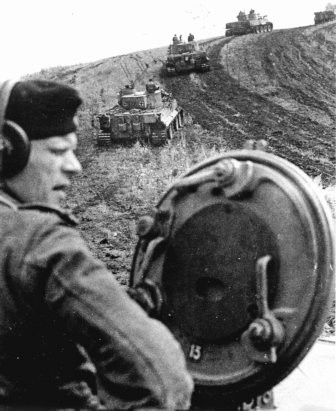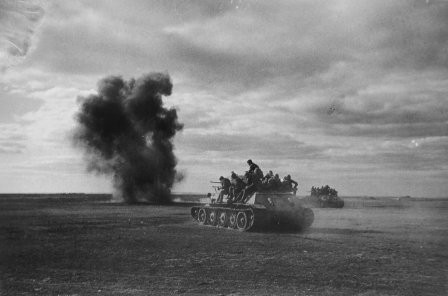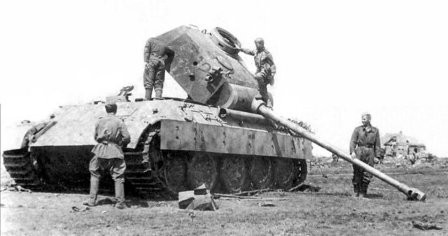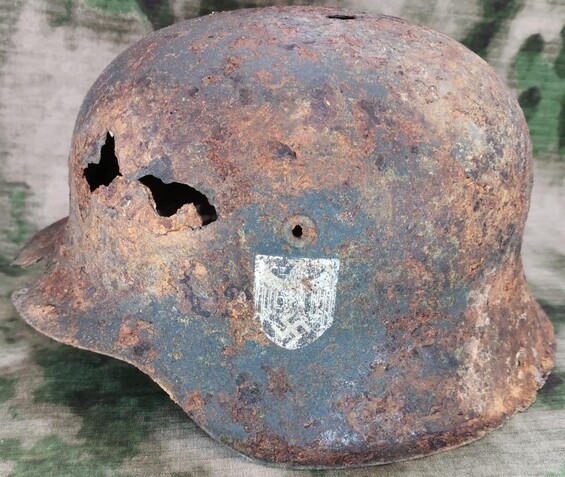After the defeat of German forces at Stalingrad in early 1943, the Soviet command began to actively build up its forces. In response, the German command developed Operation "Citadel," aimed at encircling and destroying Soviet troops in the Kursk area. Kursk became a strategically important hub, and both sides prepared for a decisive battle.
The history of the Battle of Kursk
July 5, 1943
Operation "Citadel" began on July 5, 1943. German troops, concentrating significant forces, launched an offensive on Kursk from two directions: from the north and the south. The first days of the operation were marked by fierce fighting; however, the Soviet defense proved to be more resilient than the Germans had expected. The Soviet command had prepared multilayered defensive lines in advance, which allowed for effective resistance to the German attacks.
July 12, 1943
On July 12, 1943, one of the most significant battles of the Kursk campaign took place—the Battle of Prokhorovka. This battle became the arena for the largest tank battle in history, with over 800 tanks from both sides clashing. Despite heavy losses, Soviet troops were able to halt the German offensive and launch a counterattack.

A column of German tanks near Kursk
July 23, 1943
By July 23, 1943, German forces began to experience serious difficulties. The Soviet command, utilizing reserves, initiated a counteroffensive. During this time, Soviet troops successfully conducted operations such as Operation "Kutuzov," which aimed to liberate Orel.
August 5, 1943
On August 5, 1943, Soviet troops began active operations to liberate Kursk. As a result of successful operations, Soviet forces were able to encircle and destroy significant enemy forces. This marked an important step toward final victory in the battle.
August 23, 1943
By August 23, 1943, the Battle of Kursk concluded with a victory for the Soviet Union. German forces were forced to retreat, and this battle became a turning point on the Eastern Front. The defeat at the Battle of Kursk dealt a serious blow to the German command and weakened their positions on the Eastern Front.

A Soviet tank with soldiers on it
Losses of the Sides
Soviet Losses: 6,500 units of armored vehicles, 1,500 aircraft, 5,000 artillery pieces and mortars, with 254,470 killed and missing, and an additional 608,833 wounded.
German Losses: 1,500 units of armored vehicles, 3,000 artillery pieces, 500,000 personnel (wounded and killed), and 3,000 aircraft (This figure is likely inflated, as at the start of the battle, the Luftwaffe on the Eastern Front had only about 3,000 aircraft).
The Significance of the Battle of Kursk in History
The victory at the Kursk Battle and the subsequent strategic offensive as part of the summer-autumn campaign of 1943 marked the completion of a fundamental turning point in World War II.
The defeat of German forces forced Germany to transfer 14 divisions and significant reinforcements from other fronts to the Soviet-German front in the summer of 1943, thereby weakening its fronts in Italy and France. As a result of the defeat of substantial Wehrmacht forces on the Soviet-German front, more favorable conditions were created for the deployment of American and British troops in Italy, leading to the collapse of the fascist bloc - Mussolini's regime fell, and Italy exited the war on the side of Germany.
Under the influence of the Red Army's victories, the scale of resistance movements in countries occupied by German troops increased, and the authority of the USSR as the leading force of the anti-Hitler coalition was strengthened. Hitler's attempt to wrest the strategic initiative from Soviet command ended in complete failure, and from that point until the end of the war, German forces were forced to engage only in defensive battles.

Red Army soldiers and a damaged German Panther tank.
Interesting Facts about the Battle of Kursk
- The Largest Tank Battle: The Battle of Kursk, which took place from July 5 to August 23, 1943, became the largest tank battle in history. Over 6,000 tanks from both sides participated.
-
Secret Plans: The Soviet command learned in advance about the Germans' plans thanks to intercepted radio messages, intelligence data from allies, and the use of codes. This allowed them to prepare a powerful defense.
- Quantity vs. Quality at Prokhorovka: Up to 1,200 tanks and self-propelled guns from both sides participated in the battle near the village of Prokhorovka. The Wehrmacht had superiority over the Red Army due to the greater effectiveness of its equipment, but the Soviet forces had a larger number of tanks. Near the village of Prokhorovka, the Wehrmacht lost 75% of its tank resources. For Germany, such losses were catastrophic and proved difficult to replenish almost until the end of the war.
-
Defeat at the Battle of Kursk Shocked Hitler: After the failure at the Kursk battle, Hitler was furious: he had lost his best divisions, not yet knowing that by autumn he would have to abandon all of Left-Bank Ukraine as well. Remaining true to his character, Hitler immediately blamed the field marshals and generals who were in direct command of the troops for the Kursk failure. Field Marshal Erich von Manstein, who developed and conducted Operation Citadel, later wrote: "This was the last attempt to maintain our initiative in the East. With its failure, the initiative finally passed to the Soviet side. Therefore, Operation Citadel is a decisive turning point in the war on the Eastern Front.
-
Victory at the Kursk Bulge Brought Closer the Opening of the Second Front: As a result of the defeat of significant Wehrmacht forces on the Soviet-German front, more favorable conditions were created for the deployment of American and British troops in Italy, marking the beginning of the collapse of the fascist bloc - Mussolini's regime fell, and Italy exited the war on the side of Germany.
Relics from the Battle of Kursk

Wehrmacht helmet with combat damage from the Battle of Kursk
In our online store of World War II relics, we have a variety of artifacts found on the battlefields of the Kursk battle, including helmets, awards, insignia, personal identification tags, parts of military equipment, and more. All these relics were discovered in the ground during excavations and have their own unique history. We ship our finds to countries all over the world. If you are concerned about the reliability of working with us, we have over 200 positive reviews, and we also accept payments through PayPal, which means that if something goes wrong, PayPal guarantees you a refund. Please visit our store at this link.




